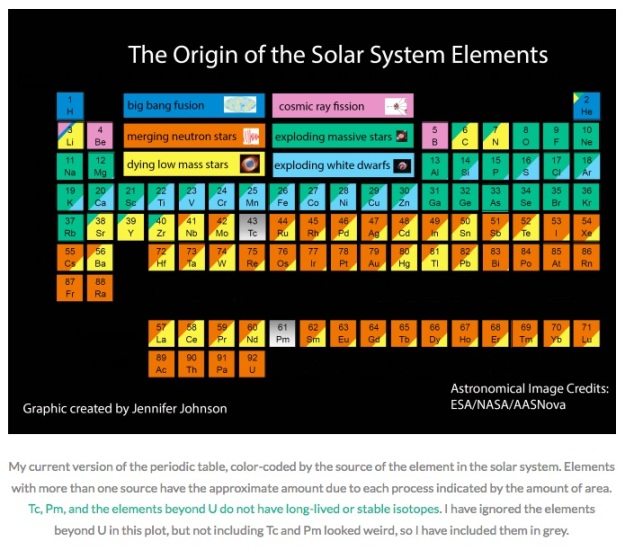10.4-9.9 billion years ago
The nitrogen in our DNA, the calcium in our teeth, the iron in our blood, the carbon in our apple pies were made in the interiors of collapsing stars. We are made of starstuff.
Carl Sagan (h/t to commenter remanandhra)
There’s a long gap between the origin of the universe, the first stars, and early galaxies, and the origin of our Solar System and our planet Earth. If we were using a linear scale for our calendar, the Solar System would get started in September. Even on our logarithmic scale, Sun and Earth wait until late January. A spiral galaxy like the Milky Way is an efficient machine for turning dust into stars over many billions of years. But the earliest stars it produces are poor in “metals” (to an astronomer, anything heavier than helium is a metal). It takes generations of exploding stars producing heavier elements and ejecting them into space before a star like the Sun — 2% metal – can form.
And just a few years back, a spectacular discovery provided support for another mechanism of heavy element formation. Astronomers for the first time detected gravitational waves from the collision of two neutron stars, 300 million light-years away. Such collisions may be responsible for the formation of some of the heaviest atoms around, gold and silver in particular. So your gold ring may be not just garden-variety supernova stardust, but the relic of colliding neutron stars. Here’s a chart showing where the elements in our solar system come from:

Alchemists thought they could change one element into another – lead into gold, say. But it takes more extreme conditions than in any chemistry lab to transmute elements. The heart of a star makes heavy elements out of hydrogen and helium; it takes a supernova to make elements heavier than iron. So it’s literally true, not just hippy poetry, that “we are stardust” (at least the part of us that isn’t hydrogen).

Bernard L
>
LikeLike